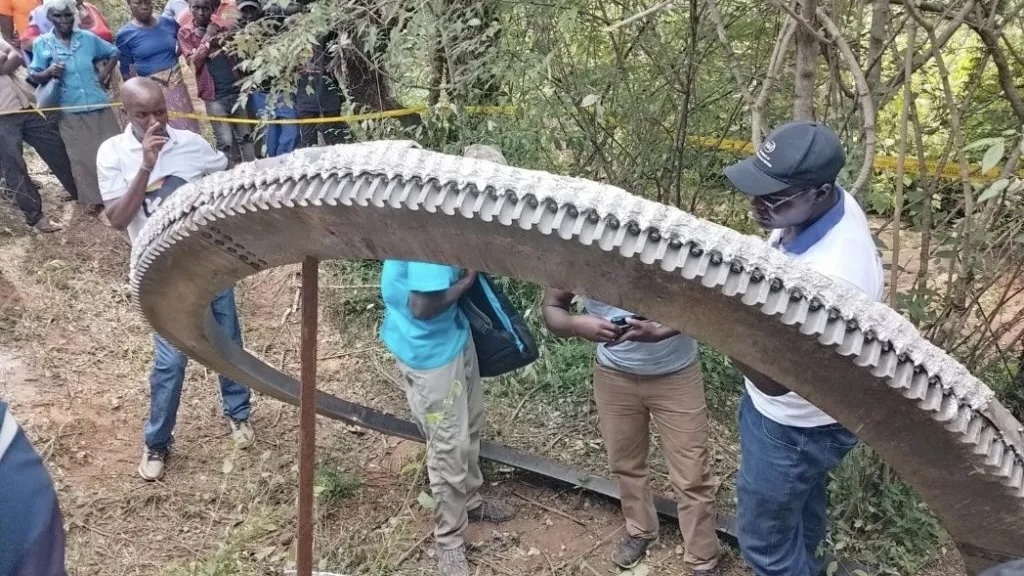Massive piece of space junk crashes into village in Kenya — and officials still have no idea where it came from
A 1,100-pound metal ring from a rocket smashed in to a Kenyan village, where it startled residents and flattened trees

A massive piece of space junk recently smashed into a village in Kenya. The 1,100-pound (500 kilograms) ring of metal likely came from a rocket, though its exact origins are still unknown, Kenyan officials say.
Low-earth orbit is getting increasingly congested. There are currently more than 170 million pieces of debris wider than 0.004 inches (1 millimeter) from rockets, space shuttles, defunct satellites and other space operations orbiting our planet. Some of that space junk simply burns up in Earth's atmosphere. But the pieces that don't are beginning to pose problems.
On Monday (Dec. 30), a small Kenyan village learned this the hard way when the half-ton metal ring crashed into a thicket, startling locals. "I was looking after my cow and I heard a loud bang," Joseph Mutua, a resident of Mukuku village, which lies southeast of the capital Nairobi, told Kenyan news station NTV. "I could not see any smoke in the clouds. I went by the roadside to check if there was any car accident, but there wasn't any collision."
At first, residents were worried that their village was under attack; the landing sounded like a bomb exploding. But instead, they found an 8-foot-wide (2.5 meters) ring-like object that had completely flattened the trees and bushes it fell on. The Kenya Space Agency (KSA) soon identified it as a separation ring from a rocket. They have not yet determined its origin.
While KSA assured people that the ring does not pose any further threat, some locals are still upset. Had the ring landed on a building or home "it would have been catastrophic," Mutua said. Others want to see the owner of the land where the debris crashed compensated for the disturbance, the New York Times reported.
Incidents like this, while still rare, are becoming more common. In May 2024, a piece of debris from a SpaceX craft struck a man's roof in Franklin, North Carolina. A month earlier, two large, scorched pieces of space junk were discovered on a farm in Saskatchewan, Canada. And in March 2024, a hunk of metal from the International Space Station (ISS) crashed through a family's home in Naples, Florida. Space junk is even posing a threat to astronauts on the International Space Station, which last year had to maneuver out of the way of debris.
As commercial and governmental space launches continue to ramp up, experts warn that the space debris problem will only get worse. Globally, there are already hundreds of space launches planned for 2025 — contributing more junk to the proverbial pile.
Sign up for the Live Science daily newsletter now
Get the world’s most fascinating discoveries delivered straight to your inbox.

Joanna Thompson is a science journalist and runner based in New York. She holds a B.S. in Zoology and a B.A. in Creative Writing from North Carolina State University, as well as a Master's in Science Journalism from NYU's Science, Health and Environmental Reporting Program. Find more of her work in Scientific American, The Daily Beast, Atlas Obscura or Audubon Magazine.









